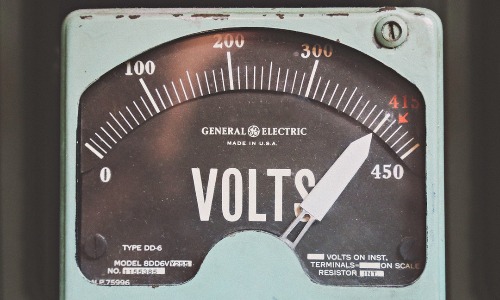I received a 2000 Watt Inverter/Converter from Tripp Lite for installation and review. I’m working on it, but dealing with an older RV in the freezing temperatures we’ve had in the south lately has made things difficult. We should be heading to Florida at the end of next week, and once we get there, we’ll be doing the installation. I need to put out a few ideas of what is going to happen though and get the schematics for the RV so we know exactly where everything goes and what to connect into.
Right now, the setup is pretty simple. Shore power is hooked up, either 30 amp or 50 amp, and the power goes to a distribution panel somewhere under the RV. The generator is also hooked into this distribution panel, so when it is running, AC power is also sent to the RV. I assume that the power from the distribution panels goes to two places: the current converter and the breaker box. Power that goes to the converter, which in this RV is located underneath the fridge, is then converted to DC power and charges the batteries. From the batteries, power then goes to the fuse box and out to the DC devices like lights, furnace, water pump, and fridge.
For AC power, the distribution panel is connected to the breaker box, which is in the same cabinet as the fuse box, and then power goes out to the AC outlets and appliances.
Now then, we have an Inverter/Converter to install, along with several more batteries when we get them. Since its an inverter/converter, it needs to be as close to the batteries as possible. The current battery cabinet has space for two batteries which is not nearly enough for our power demands. We will have to figure out somewhere to put more batteries that can be vented and also has enough space for all of them and the strength to support the weight. For this, we are going to have to install it in a basement unit, but we have to figure out which one. The basement unit on the driver’s side is large enough and it sticks up into the RV and adds extra space underneath the couch. This would be ideal as we could probably mount a box from the top of it and reinforce it inside and underneath the couch with out losing space or making it look ugly. The other bonus for this location is that it is both near the generator and the old battery compartment, so the distribution panel should be somewhere in there.
When we get to Florida, we will be running new cable and changing the electrical layout of the RV. The old converter will come out, so its cable might be reusable. If we can feed that to the new location of the inverter, we’ll save money and hassle. It is already hooked into the AC shore and generator power to charge the batteries, so simply taking that cable and connecting it to the new inverter will be easy. Assuming there is a long enough cable for the new location. We will need cables for connecting the inverter to the distribution panel though, as well as connecting the batteries to each other and to the inverter. If done right though, this should be less than 10 feet total.
If I am correct in my design, then we should be able to power the AC outlets with AC from the inverter. I know we won’t be able to do things like run a microwave or the air conditioning, but we planned for that anyway. Some items like a crock pot work fine with devices like a infrared heater going, so in theory, we should still be able to cook while we are on inverter power, though it will be limited. We might be able to use a coffee pot without throwing a breaker so Tiffany can have her coffee in the morning as well.
Now then, to get it all set up and working right.
